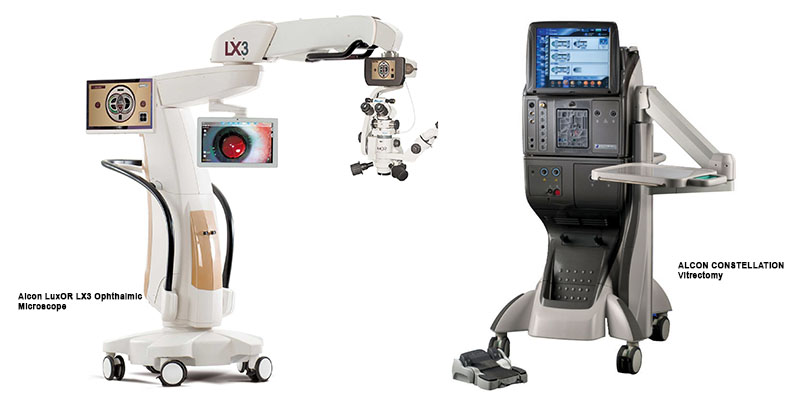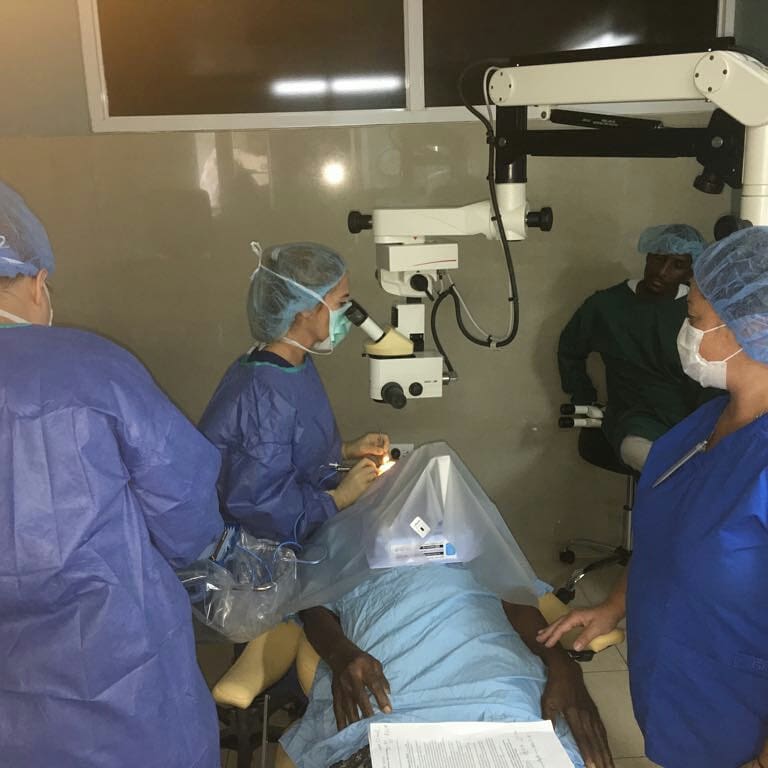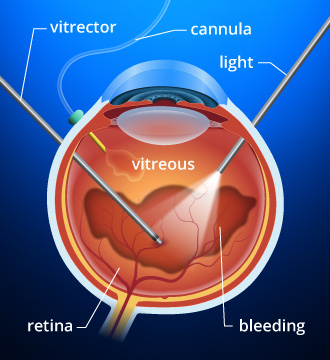VITREORETINAL SURGERY
Vitrectomy (Vitreous Surgery)
Vitrectomy is simply the removal of the vitreous gel from the eye. This procedure is performed in our out-patient operating room, using our state-of-the-art Luxor LX3 operating microscope, and ALCON Constellation Vitreo–Retinal System.

There are several retinal disorders for which vitrectomy surgery may be the appropriate treatment such as:
- Diabetic Vitreous Haemorrhage,
- Proliferative
Vitreo-Retinopathies - Macular Holes,
- Traction Retinal Detachment.
- Epiretinal membrane
- Endophthalmitis
- Intraocular foreign body removal
- Retrieval of lens nucleus following complicated cataract surgery
How is this done?
The vitreous is removed using small instruments inserted through needle-size incisions (25G & 27G) in the eyewall. Fibre-optic lights are used to see inside the eye, and often to deliver laser treatment when necessary.
Vitrectomy is typically performed under local (injection) anaesthesia, with sedation. In other words, the patient is awake during the procedure but does not feel pain or see the procedure being performed. General anaesthesia may be used instead in some cases. It is an outpatient procedure; no hospital stay is required.

What happens next?
Patients go home with a patch on the eye, which is removed in the doctor’s office on the day after surgery. In cases where altitude travel is to be avoided, patients will have to make arrangements to stay in Kingston. A limited-capacity observation facility is onsite for patients who require an overnight or short stay. There may be several follow-up visits during the first month and visits less frequently for a few months beyond.
Eye drops are used for a few weeks after the surgery. These typically include steroid drops to minimize inflammation, antibiotic drops to prevent infection, and dilating drops to provide comfort and minimize scarring of the pupil. Drops to lower the pressure in the eye are also sometimes necessary. Patients are usually able to return to normal activity within a few weeks. Most of the healing occurs during the first month, but full visual recovery may take a few months.
What to expect
At the time of a vitrectomy, the eye is often filled with air or a mixture of air and gas. This may be done to prevent or repair retinal detachment, close a macular hole, or for other reasons. The type of gas used depends on the circumstance. The gas is reabsorbed by the eye over a period of time; air usually lasts about a week, while longer acting gases may take 2 months to be reabsorbed. It is replaced with the clear aqueous fluid that your eye produces at all times.
POST VITREO-RETINAL SURGERY RECOMMENDATIONS

- Wash your hands at all times, especially when manipulating your eyes and administering medication
- Maintain eyelids and eyelashes clean.
- To wash your face, eyes should be closed. Use bottled water to wash your face and eyelids two times a day, Avoid using tap water.
- Use disposable napkins (Kleenex) to clean your eyes. These should only be used once and should be disposed. Avoid towels or handkerchiefs. Place your disposable napkins in a clean place; remember they will be cleaning your eyes. Avoid pockets or purse.
- Don’t poke your eyes in order to clean secretions.
- It is highly recommended not to bathe in the ocean, or shower, river or pool, etc. until the doctor authorizes to do so
- Avoid lifting objects heavier than 5 pounds.
- Place antibiotics as follows:
a) First week after surgery
b) Second week after surgery
c) Third week after surgery
d) Fourth week after surgery
- If signs or symptoms of painful red eye, and swelling, reduction of vision, and tearing, call your doctor or visit your care center facility for assistance.
- If you have intraocular gas, you cannot travel by air, or climb a mountain until all the gas has reabsorbed.
- Your head position during the day is__________________ and your position for sleep is________________________
- Your next appointment is:______________________________
- You should always bring to your appointment your medications and eye drops. Remember to bring someone with you.
- Don’t hesitate in asking your doctor questions.
DAYRA LEON MD
RETINA AND VITREOUS SURGEON
